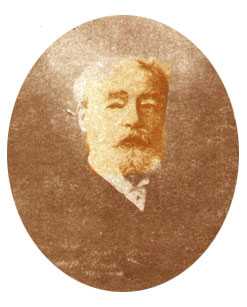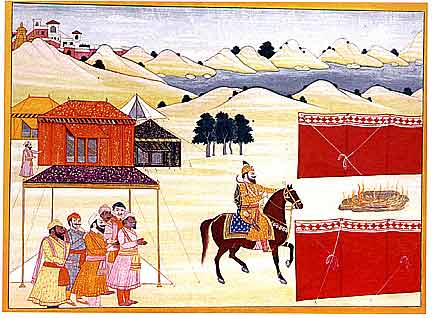5. A German writer Baron Charles Hugel, in his book "Travels in Kashmir and the Punjab" - printed in London in 1845, on page 263 writes,
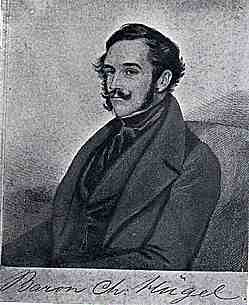
7. Writer/Journalist ShivLal in an article in a weekly periodical "Redical" writes under the heading "New Light on the Life and Work of Guru Gobind Singh.";
"Contrary to the general belief that Guru Gobind Singh's worldly life came to an end with his disappearance from Nander, there is ample evidence of considerable historical veracity to show that the great Guru travelled from the South back to Punjab and lived for another 100 years an active life in keeping with his genius and vow of service of the country and its people."
8. Bhai Kahan Singh Nabha, an eminent Sikh scholar, writer of the great 'Mahan Kosh' and many other knowledgeable Granths, was of the conviction that Guru Gobind Singh did not die at Nander but came to Nabha and stayed in a small grove of forest, under the name of Baba Ajaypal Singh.
In an article written in the monthly magazine "Punjabi Bahen" in May 1916, he wrote under the heading of "Itihas de Unlikhey Patrey" (The unwritten History), wherein he narrated the story of Guru Gobind Singh-not dying at Nander but coming over to Nabha and staying there under the assumed name of Ajaypal Singh.
He further mentions that this story was told by his father Mahant Baba Narain Singh who had heard it from his grandfather Baba Saroop Singh, who was the personal attendant of Baba Ajaypal Singh Baba Narain Singh had written a small booklet, in which he narrated the story of his grandfather, the personal attendant of Baba Ajaypal Singh. He wrote that Baba Saroop Singh was shown the dagger wounds incurred at Nander by Guru Gobind Singh at the hands of the Pathan brothers. Hence Baba Saroop Singh was more than convinced that Baba Ajaypal Singh was no other than Guru Gobind Singh himself.
The agreement to this story was given by the editor of 'Punjabi Bahen", Master Bir Singh, and was acclaimed by scholars of the time, who regarded Bhai Kahan Singh as an authority in Sikhism.
This story was after ten years again reprinted in the monthly magazine "Phulwari" in March 1927. This time Babu Teja Singh, who was an enemy of Bhai Kahn Singh, along with some others, took up the subject and tried to defame Bhai Sahib. They agitated against him in such a derogatory manner that eventually Bhai Kahn Singh Ji succumbed to them and apologised for his writing, that Baba Ajaypal Singh was in fact Guru Gobind Singh.
The Singh Sabha movement, with the backing of the British was bent on establishing the Adi Granth as the Guru, and Bhai Kahn Singh Nabha's article was detrimental to that.
Hence by Bhai Sahib's apology the aim of the sabha was easily achieved.
9. In 1966, Guru Gobind Singh foundation printed a souvenir "Tenth Master" in which a prominent Sikh personality Divan Singh Maftoon wrote exactly what Bhai Kahn Singh had written in 1916 and corroborated his story that Guru Gobind Singh did not die at Nander, but came to live in Nabha under the guise of Ajaypal Singh.
10. In the "Daily Milap', the editor Ranbir wrote on 31st January 1973; "I am convinced that Guru Gobind Singh did not die at Nander but secretly slipped away from there. More research is needed to verify this."
11. Sant Das Chhiber, mentioned previously, wrote in the end of the same Janam Sakhi (mentioned above) - his actual discourse with Guru Gobind Singh. This was confirmed by Bhai Randhir Singh, the research scholar in his "Itihasak Pattar" of April 1951.
12. The Panth Parkash of Giani Gian Singh , edited by Giani Kirpal Singh (ex-head granthi of Darbar Sahib), printed in 1977, clearly states the conferring of the Gurgaddi by Guru Gobind Singh to Guru Balak Singh and claiming himself to be the reincarnation of Satguru Ram Singh, thus:-
" bwlk imRgyS qY ivSys aupdyS nwm, XdI nr nwrI lY ApwrI Bv qY qry [
AOr ielhwm krqwr keI bwr dXo, nwm dY auDwr kir jIvn kw qUM Kry [
AYpy gur dsm drs dY jo khXo qWih, myyro Avqwr AMs rwm isMG hvY Bry [
XwihN hyq qWih, nWih Aor kWih mWih inj Skiq rKweI, gur vwk idF Qy Dry [209[
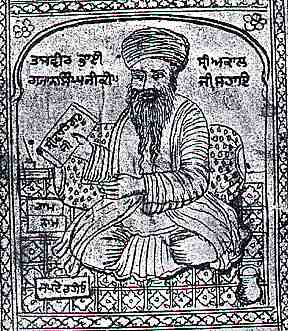
The Gurgaddi to the Adi Granth?
Now the question arises why Guru Gobind Singh broke the traditional chain of living Gurus and decided to give the 'Gurgaddi' to the Adi Granth.
My convictions are that he did neither. Let us look at the facts when the Guru was at Nander during his last days.
There was no Adi Granth available at the time it is perceived that the Guru gave the 'gurgaddi' to the Adi Granth. No mention of the Adi granth available at Nanded is recorded in the main historical granths e.g. Panth Parkash ( Rattan Singh Bhangu), Gur Partap Suraj (Bhai Santokh Singh) and Gur Bilas (Bhai Sukha Singh). Although it is said in the 'Mahankosh' by Bhai Kahn Singh Nabha that the 'Gurgaddi' wala Granth Sahib was in Samvat. 1818 taken to Kabul by the invader Abdali - but after considerable research nothing has been traced (page 437 under 'Granth Sahib'-Mahankosh).
Even and if an Adi Granth was available and the 'Gurgaddi' was given to it - should it not be the most "Important" and "Prominent" relic of the Sikh Panth? And the Guru Granth placed in an "Exceptional" and "Revered" place with the inscriptions that this was the ACTUAL "Beed" (Adi Granth) that the Guru bestowed the 'Gurgaddi' to.
I would like to quote from Mcleod's Sikhism - page 127,
"There is no reliable historical work which suggests a) that the Guru died in the presence of the Sikhs; (b) that the Sikhs actually performed the cremation by setting light to the pyre. What history tells us is that the Guru, still alive, sat on the pyre and then ordered the Sikhs to leave the enclosure, which had been constructed by placing a screen around the pyre. Indeed, he went even further than this. He sternly commanded them to stand with their backs to the enclosure and then insisting that his Sikhs, having left it, should stand with their backs to it?"
Is it not ironic that the Guru who preaches 'suicide' as the worst of crimes - is sitting on the funeral pyre while alive?
After the "cremation", the Guru helped two Rajahs of Rajput origin who were jailed in the Pune Fort and who had asked for the Guru's deliverance. The Guru brought them to Manmad (a town near Nanded), where a gurdwara stands to mark this momentous feat. Also are recorded the first hand information given by some ascetics who met the Guru on Horseback and told them to go and console the Sikhs who were in mourning at Nander. All this happened within a couple of days of the 'funeral'.
These are but a few facts that prove that the Guru did not die at Nanded - nor He gave the 'gurgaddi' to the Adi Granth. The Adi Granth was always installed at a higher level than the Gurgaddi. Lowering it from its original place, was it meant to raise or lower its prime status?
No Adi Granth Sahib had the prefix "Guru" scribed on it until the 1860's. i.e. ,only during the Singh Sabha time did this prefix 'Guru' was added to the Granth Sahib - as all manuscripts available before the Singh Sabha time have Adi Granth or Pothi Sahib etc., scribed on them.
I have a copy of a 'Gutka' printed in 1897 AD by Munshi Gulab Singh & Sons, Lahore (copy enclosed) which has the Sikh Ardas finishing at Guru Gobind Singh and not once the Guru Granth Sahib has been mentioned. Had the Adi Granth been the 'Guru' - then, until 1897 this would have been a confirmed belief and the Sikh Ardas would not have been such.
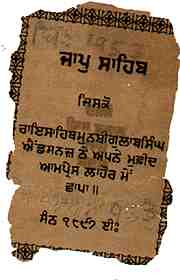
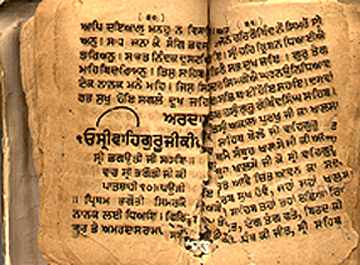
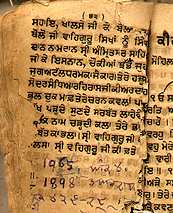
An extract from "The Sikhs of Punjab" by J.S.Grewal on page 147 denotes:- "The idea of the Guru-Panth became stronger with the increasing importance of Singh identity. In a tract published in 1919, it was argued that no human being could be the Guru of the Sikhs after Guru Gobind Singh decided to vest Guruship in the Adi Granth. The Sikhs were 'to view themselves as the Panth and not to recognize any single person as their sole leader'. The loss of Guru-Panth was emerging as clearly as the equation of the Guru with the Adi Granth."
If the Granth 'Guru' was an established fact, the above decree by the 'Singh Sabha' in "1919" (nearly two hundred years after Guru Gobind Singh) would not have been necessary.
The authenticity of the Dohra "Agya Bhaee Akaal Ki tabi Chalaeo Panth. Sab Sikhan ko hukam hai Guru Maneo Granth."
The above 'dohra' (couplet) is chanted after 'ardas' in most gurdwaras and is thought to be the last decree (hukam) of Guru Gobind Singh Ji, after he ordained the 'Gurgaddi' to the Adi Granth at Nanded.
The above 'dohra' is catagorilly not Guru Gobind Singh Ji's last command - as it is not in any of Guru's hukamnamas or the 'Dasam Granth'.
A brief history of this 'dohra' is as follows:-
This 'dohra' was first published in the 2nd. edition of the 'Panth Parkash' of Giani Gian Singh in Bik. 1943. at Amritsar. But before this edition three editions of the 'Panth Parkash' had already been printed. The first one in Delhi in Bik. 1936., second one in Lahore in Bik. 1941 and third one in Lahore in Bik.1943 of stone print. In fact this Bik. 1943 Amritsar printed 'Panth Parkash' called the second edition should have been the fourth edition - but it has second edition printed on it and the 'dohra' included in this. The previous three editions do not contain this 'dohra'. A few years ago (1980's AD) the 'Panth Parkash' was edited and published by Bhai Sahib Bhai Kirpal Singh Ji ex-head Granthi of the Golden Temple and he clearly states under what circumstances this 'dohra' was included in the 'Panth Parkash' without the knowledge of Giani Gian Singh Ji who had given all his rights to the Singh Sabha at that time because of his illness, and how the Singh Sabha took advantage of that and distorted the original texts of Giani Ji.
Another place where this 'dohra' is supposed to be written is the 'Rahitnama' of Prahlad Singh. When we look at the Mahankosh - Bhai Kahn Singh dismisses this 'dohra' as a fabrication by some poet -as the date on this rahitnama is Bik. 1752 when the Khalsa was not even created nor Guru Ji was at Nanded ( Copy from Mahankosh can be seen here) . The Singh Sabha leader Gurmukh Singh was solely responsible for this falsehood. (This is said in the rahitnama of Prahalad Singh, who says that Gurmukh Singh ordained him to write this rahitnama).
A book "The Ideal Man", written by Dr. Sukhbir Singh Kapoor, writes on page 125,
"Munshi Sant Singh, a munshi of the Bedis who completed his work in 1865 AD, composed the most popular verse, which every Sikh recites daily after Ardas (Prayer) - "All community should recognise the Guru Granth as thr Guru. And obey the commandments contained therein. Recognise the Guru Granth as the visible body of the Guru. The Sikh who wishes to meet me should find me therein. (Guru Granth Ji manyo, Pargat Guran Ki Deh.Jo Mujh-ko Mil-Bo Chahay, Khoj Isi-Meh Lay)"
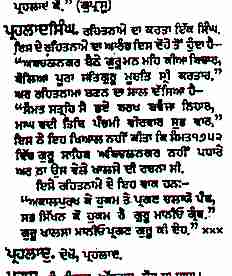
This painting has been done by a European Artist who had stayed in Amritsar for quite some time - "Maharaja Ranjit Singh listening to the Granths." As can be seen that that a large umbrella graces the Maharaja but the "Granths" are completely void of any ritualistic materials.
A staunch Sikh like the Maharaja would have never have seated himself on a settee, which would have dishonoured the "GURU Granth" - if it was indeed "The Guru".
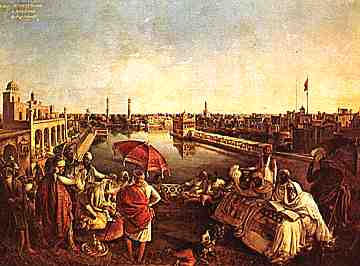
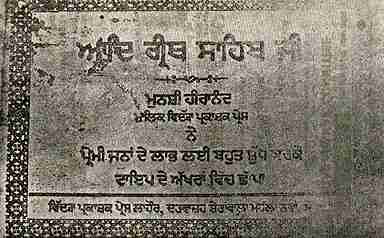
The following extracts are taken from "The Sikh Religion" by M.A.Macauliffe, Vol. 5/6
Page 254:
CHAPTER XXXIII
Mata Sahib Kaur, the Guru's youngest wife, died of grief very soon after her husband. She was cremated at the shrine of Guru Har Krishan in Dihli. When Ajit Singh, the boy adopted by Mata Sundari the Guru's remaining wife, grew up, she provided him with a wife. He begot a son called Hathi Singh Ajit Singh imitated the late Guru as much as possible He used to hold court, call himself a guru, and entertain a retinue. He endeavoured to obtain from Mata Sundari the arms belonging to Guru HarGobind, which the late Guru had given to Sahib Kaur on her departure from Nander. Ajit Singh believed that if he wore them, every one would hail him as Guru. When he made his demand for the arms he was sharply reproved by Mata Sundari. On this he drew his dagger to kill her, but some friends interposed. Mata Sundari then cursed him, said he should forfeit his faith, and die an untimely death. One day as he was riding in the bazar his herald said to him, '0 guru, behold the Muhammadans praying.'
(Is it not ironical that after the supposed declaration of the Adi Granth as the 'Guru' after Guru Gobind Singh, that the adopted son tries to declare himself as the 'Guru', that also under the nose of Mata Sundari, the wife of the Guru?)
Page 331
After the completion of the morning and evening obligatory divine services and of the uninterrupted reading or chanting of the Granth Sahib the Sikhs repeat a prayer or supplication called-
ARDAS, which may now suitably end our presentation of the Lives and writings, of the ten Gurus
SRI WAHGURU JI KI FATAH ! Having first remembered the Sword meditate on Guru Nanak Then on Guru Angad, Amar Das, and Ram Das; may they assist us Remember Arjan, Har Gobind, and the holy Har Rai; Meditate on the holy Har Krishan, a sight of whom dispelled all sorrow. Remember Teg Bahadur, and the nine treasures shall come hastening to your homes. Ye holy Gurus, everywhere assist us. May the tenth king, the holy Guru Gobind Siugh, every where assist us. God Himself knoweth, He Himself acteth; it Is He adjusteth. Standing in His presence, Nanak, make supplication. Sikhs of the true Immortal God, turn your to the teachings of the Granth Sahib and the deeds ot Khalsa; utter Wahguru I Meditating on the Deathless One, endowed with all power compassionate, and just, utter Wahguru Meditating on the deeds of those who worshipped Name, plied the sword, ate and distributed their food companionship, and overlooked others faults, 0 Khalsa utter Wahguru! 0 Deathless Creator, illimitable, this creature forgetting Thy name is so attached to worldly goods, that he hath forgotten the Real Thing. Without Thy supreme mercy how shall we cross the ocean of the world? 0 great lust, wrath, greed, worldly love, jealousy, and other passions greatly trouble our minds, but on coming towards Thee worldly maladies and afflictions are healed and dispelled: Show us such favour that we may by word and deed be Thine, and that in all things we may obtain assistance and support. Grant to Thy Sikhs the gift of Sikhism, the gift of Guru's instruction, the gift of faith, the gift of in Thee, and the gift of reading and understanding the Granth Sahib. May the Sikh choirs, mansions, and banners ever Victory to the faith! May the minds of the Sikhs be humble but their intellects exalted! Utter Wahguru! Wahguru!Wahguru !! We offer this Ardas in Thy presence and at Thy lotus feet. Pardon our errors an4 mistakes. May all Sikhs read and hear the Gurus' hymns be profited! Through Nanak, may Thy name, 0 God, be exa1ted, And all prosper by Thy grace! Sri Wahguru ji ka Khalsa! Sri Wahguru ji ki Fatah
(The above is the Ardas, which was performed by the Sikhs during the time of Macauliffe. As the reader can see there is no mention of "GURU" Granth Sahib after Guru Gobind Singh or the prefix 'Guru' in later mentionings. Understanding the teachings of the 'Granth Sahib' was the main theme during and after the Gurus.)
